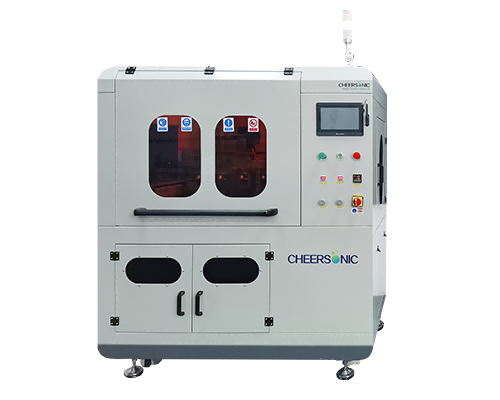Polyimide diaphragm modification technology
Polyimide diaphragm modification technology – Polyimide Coatings – Cheersonic
PI nanofiber membrane prepared by electrospinning technology has high porosity and good electrolyte wettability. However, high porosity will also reduce the mechanical properties of the diaphragm, which will put pressure on the assembly and use of the battery. On the other hand, the large pore size of the PI nanofiber membrane also brings about the self-discharge problem of the battery. In view of this, researchers have carried out a series of high-performance modification work on PI diaphragms, especially PI nanofiber membranes.
1. Surface coating modification method
Surface coating modification refers to a method of modifying by depositing or coating a functional layer on the surface of the base membrane. For example, Al2O3 nanoparticles are used to coat and modify the PI nanofiber membrane. The surface of Al2O3 nanoparticles contains abundant polar groups, which is conducive to improving the affinity between the PI nanofiber membrane and the electrolyte and reducing the interfacial impedance of the battery.
After 200 cycles, the interfacial impedance of the battery assembled by Al2O3 coated PI nanofiber membrane was 45.8 Ω, which was lower than that of pure PI nanofiber membrane (51.1 Ω) and PP diaphragm (63.4 Ω). Under the high rate cycle of 10C, the discharge capacity retention rate of the assembled battery was 78.91%, which was higher than that of pure PI nanofiber membrane (68.65%) and commercial PP diaphragm (18.25%).
The coating modification method can realize the functional modification of the diaphragm, but there are still some disadvantages: on the one hand, the introduction of the coating layer increases the mass of the diaphragm and reduces the energy density of the battery; secondly, the coating layer will bring a certain degree of pore blocking effect, increasing the resistance of Li+ migration; finally, when the interaction between the coating layer and the substrate is weak, the interfacial resistance is increased, and there is a risk of shedding during long-term use.
2. Blending modification method
Blending is also a simple and effective high-performance modification method, which only requires the introduction of modifiers before or during film formation.
3. Gel filling method
The gel filling method is to inject gel polymer electrolyte into the internal pores of the PI diaphragm to improve the liquid absorption and retention capacity of the PI diaphragm. For example, by combining the characteristics of PI non-woven fabric and 2-acrylamide-2-methylpropanesulfonic acid (AMPS), the in-situ polymerization product of AMPS, PAMPS, is used to perform gel filling modification on the PI non-woven fabric.
4. Cross-linking modification method
In the nanofiber membrane prepared by electrospinning, the mechanical strength of the nanofiber membrane is low due to the absence of interaction between fibers, and it is difficult to meet the tension requirements of the diaphragm during the battery assembly process. In order to improve the mechanical strength of the nanofiber membrane, the researchers used thermal micro-cross-linking, solvent-induced micro-cross-linking, alkaline solution etching and coaxial spinning to prepare PI nanofiber membranes with cross-linked structures.
Ultrasonic spraying systems have been proven to be used in various applications that require uniform and repeatable photoresist or polyimide film coatings. The thickness control range is from submicron to more than 100 microns, and any shape or size can be coated.
Ultrasonic spraying technology is used for semiconductor photoresist coating. Compared with traditional coating processes such as spin coating and dip coating, it has the advantages of high uniformity, good encapsulation of microstructures, and controllable coating area. In the past 10 years, it has been fully demonstrated that the 3D microstructure surface photoresist coating using ultrasonic spraying technology, the prepared photoresist coating is significantly higher than the traditional spin coating in terms of microstructure wrapping and uniformity Craft.
The ultrasonic spraying system can precisely control the flow rate, coating speed and deposition volume. Low-speed spray shaping defines atomized spray as a precise and controllable pattern to avoid excessive spray when producing a very thin and uniform layer. The ultrasonic spray system can control the thickness from sub-micron to more than 100 microns, and can coat any shape or size.
About Cheersonic
Cheersonic is the leading developer and manufacturer of ultrasonic coating systems for applying precise, thin film coatings to protect, strengthen or smooth surfaces on parts and components for the microelectronics/electronics, alternative energy, medical and industrial markets, including specialized glass applications in construction and automotive.
Our coating solutions are environmentally-friendly, efficient and highly reliable, and enable dramatic reductions in overspray, savings in raw material, water and energy usage and provide improved process repeatability, transfer efficiency, high uniformity and reduced emissions.
Chinese Website: Cheersonic Provides Professional Coating Solutions


